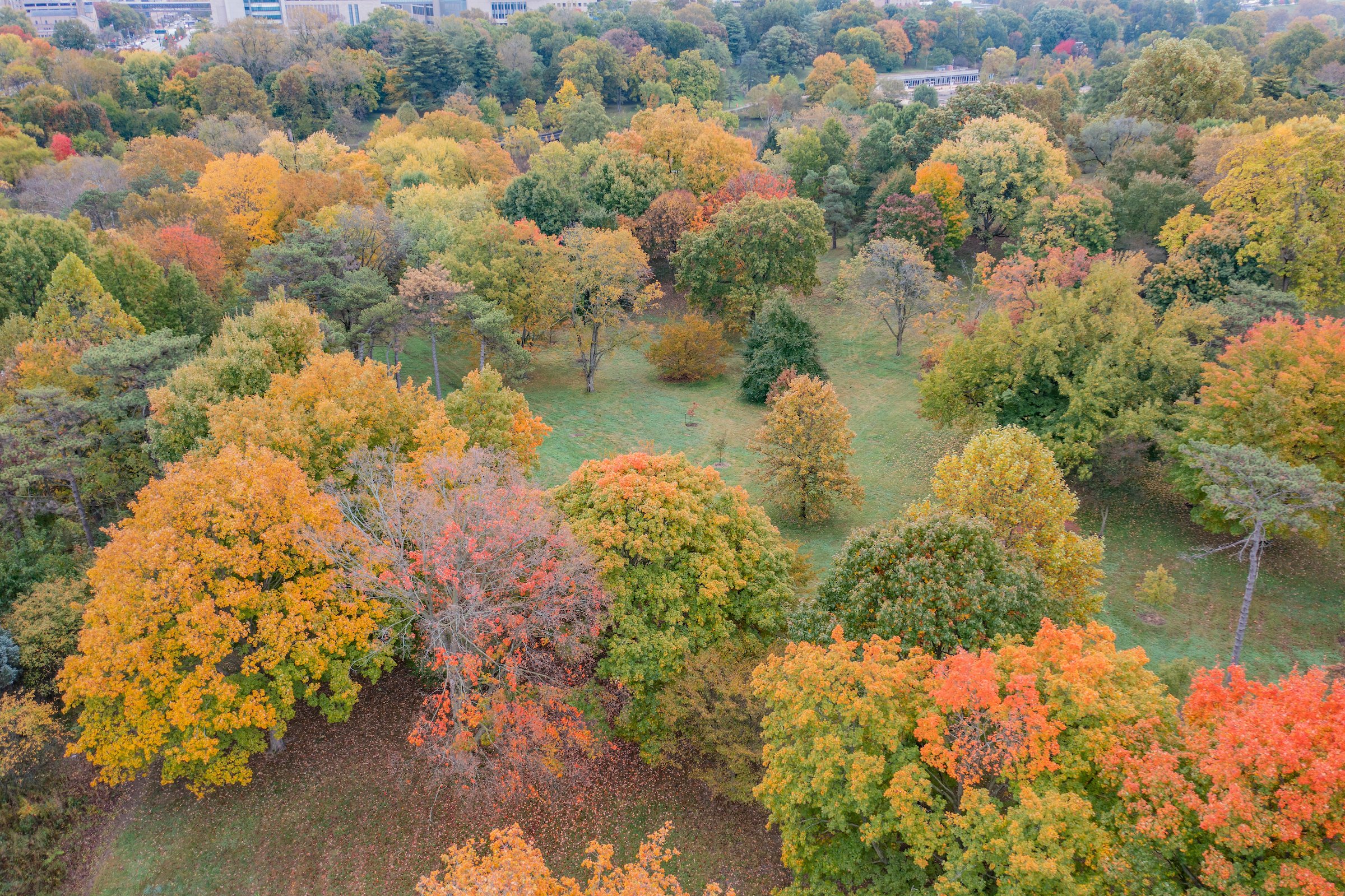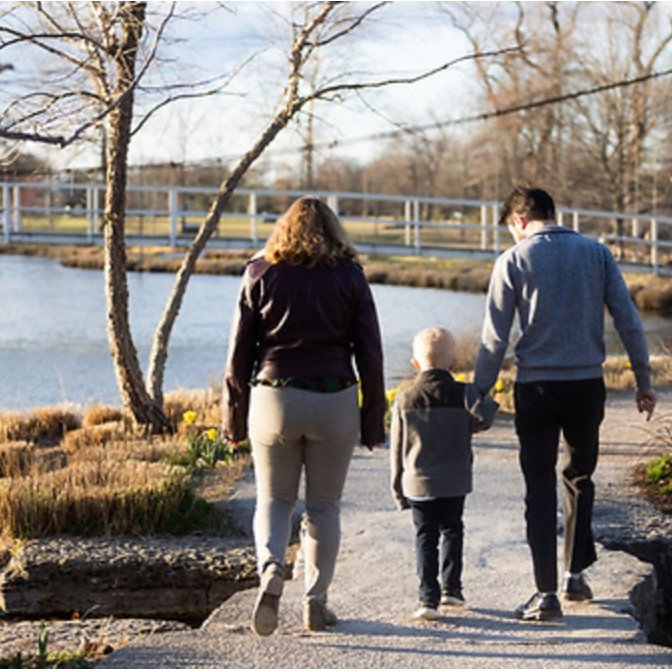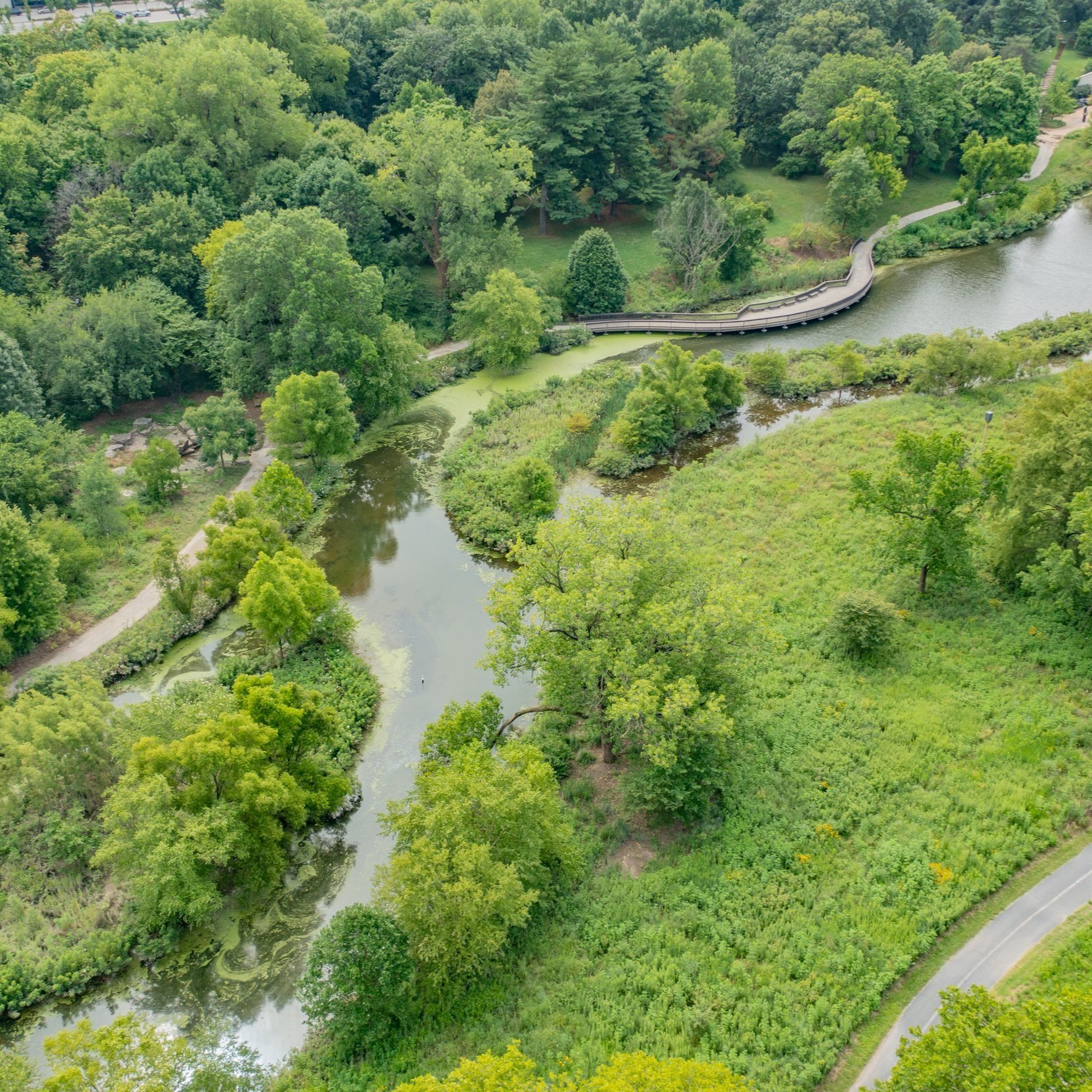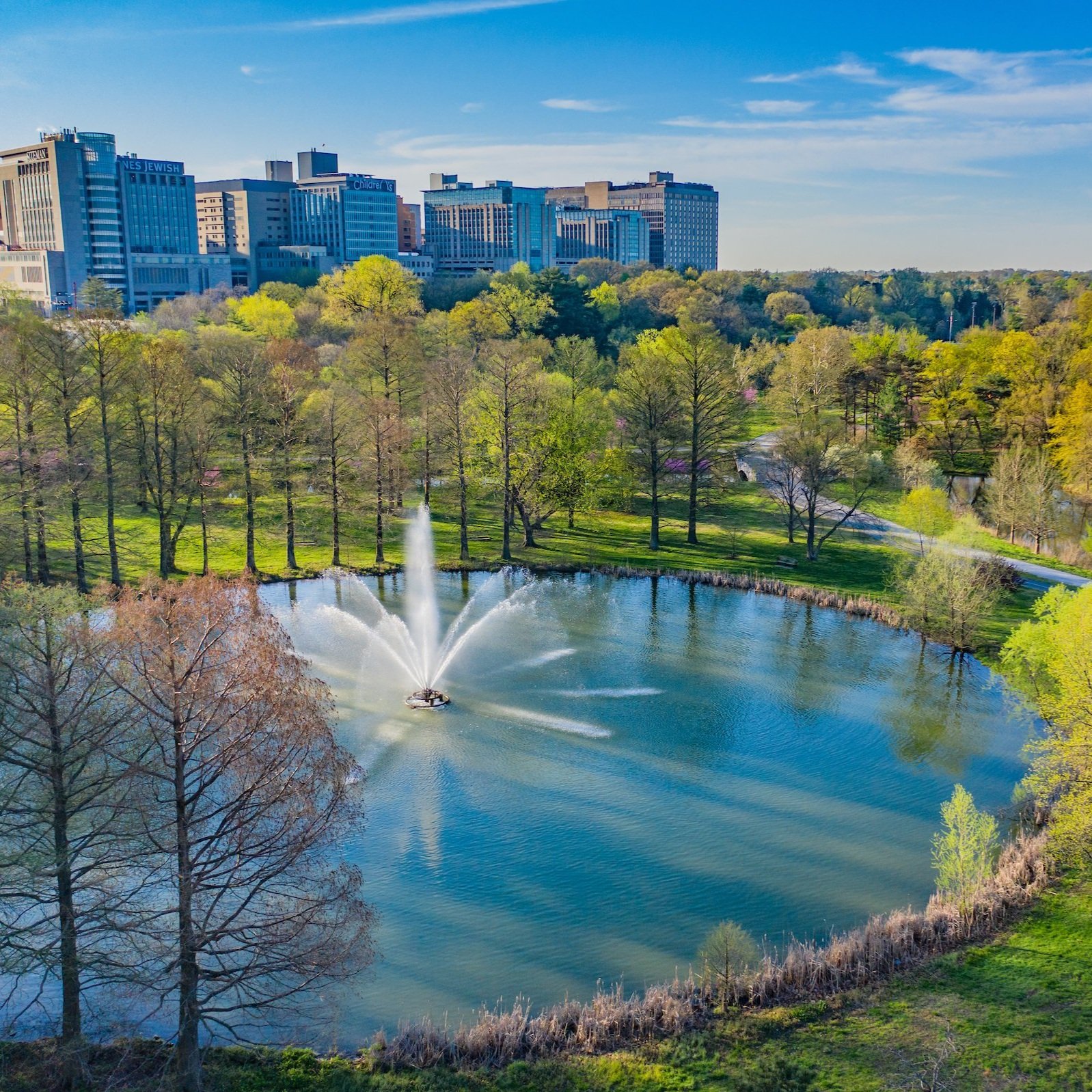The Wonderful Trees in Forest Park
"A tree is an investment in time." -Roman Fox, Forest Park Forever Horticulture Superintendent
Planting a tree in Forest Park is a long-term commitment. Our team can redo a flower bed if a frost comes early or record-breaking rainfall floods the Park. But once we plant an oak tree, it must weather conditions for another 100 years so four generations down the road can enjoy its full majesty.
Forest Park spans 1,380 acres inside St. Louis City, including 194 acres of Nature Reserve, picturesque landscapes, 30 miles of trails and paths, recreational sports areas and 2.5 nautical miles of waterways. It's considered the #1 City Park in the U.S.!
Thanks to support from annual members, Forest Park Forever can actively manage over 16,000 trees that provide shade, minimize particulate pollution, provide oxygen, frame our views, give us beauty and joy.
There are approximately 47,000 trees in Forest Park. Our Horticulturists and Stewards aim to plant an additional 1,045 trees and saplings—trees that are only 3-4 feet tall—in our Nature Reserve this year and 569 more in the manicured areas of the Park. We must intentionally select trees that can thrive in our diverse and ever-changing urban habitat.
Our team thinks about your walk in the Park a lot, and we need to be careful with plantings that will last multiple lifetimes. The ability to purchase species that support current needs and aesthetics but also as a response to greater weather extremes in this region is critical to our work.
Chosen for aesthetics, dogwood, redbud, and magnolia trees enhance any landscape. Oak, bald cypress, and hickory trees have beauty all their own, and they are more durable selections for future generations because they acclimate to many different microclimates and can withstand the pressures of extreme cold, heat, and storms.
In addition to pleasing visuals, having large-growth trees for shade in areas where folks gather and play is incredibly important. And keeping leaves from cluttering picnic spots or interfering with play on sports fields requires a lot of labor. Compared to the large leaves of an American sycamore, leaves from an elm or a honey locust planted near Emerson Central Fields and the Concession Stand at Boeing Aviation Field are small and easily carried by the wind. Our nonprofit relies on private donations for purchases like this, so current and future generations may enjoy playing among the same trees.
Stormwater is a massive part of our thoughts and plans. Part of the Forest Park East Waterways project will restore and enhance the shorelines around Bowl Lake, Round Lake and Jefferson Lake. One water-conservation tactic we will use is planting a new generation of Bald cypress trees in selected areas to capture and filter stormwater before entering the stormwater system. Financial support allows us to choose trees that can handle large amounts of water and withstand times without much liquid.
Park experts also use this technique in rain gardens throughout the Park. Our team planted River birch in the Muny’s Festival & Parking Plaza rain garden for its beauty, diversity and ability to thrive in quick-draining flood plains.
Our nonprofit conservancy partners with the City of St. Louis Department of Parks and Forestry to care for trees. This cooperative effort includes removing around 500 trees annually to keep our visitors safe from failing or hazardous trees.
"A strong tree healthcare program is so important. We plant flowers for future seasons and we plant trees for future generations." - Shawnell Faber, Forest Park Forever Director of Land Management
The living world and all its systems are complex and eliminating plants is never the final step in Forest Park. We remove trees that pose the most risk to visitors, and in the nature reserve, we leave select dead trees as habitats for insects, animals and other plants.
Forest Park is a haven for visitors seeking fresh air, restoration and wonder. Our conservancy works year-round to design welcoming landscapes, maintain lakes and waterways, and preserve native habitats along paths and trails that transform with the seasons.
Tune in to KMOV on Wednesday, Dec. 7, for A Day 4 Forest Park to learn more about how our nonprofit conservancy restores, maintains and sustains the Park.
Special thanks to Enterprise Holdings Foundation for sponsoring our Year-End Membership Drive--become a member today and make twice the impact!
Just as different features draw people to the Park, there are many reasons folks choose to become Forest Park Forever members. The support and generosity of members are the 💚 of our ability to care for Forest Park as it sustains us all.














